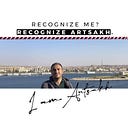The History of woodcarving in Africa
Woodcarving, one of the oldest forms of art, has been practised by all civilizations since the Stone Age, owing to its ease of access.
Traditional African wood carving reflects the culture's original and authentic philosophy. Through logic and harmony, it gives a highly organised system of thought a specific visual form. It is a philosophy that considers the nature of beings and the universe to be a process manifested by shifting and moving energies.
It is a time-honoured craft with rich cultural significance in Rwanda and Ghana. Male sculptors and artisans carved detailed wooden objects such as bowls, ritual dolls, and masks out of jacaranda, cedar, tweneboa, mahogany, teak, and pawpaw wood.
Tribal African sculpture is typically religious or spiritual, with a focus on the human form and, on rare occasions, animals or mythical objects. They demonstrate creative spirits and skills that exhibit good balance, craftsmanship, attention to detail, and finishing—a design essence that reflects the creator's attention.
African sculptures are typically figurative, depicting the human form, and are made primarily of wood. It can date back to the invention of tools and can last for centuries. It can also be as contemporary as it is right now, where it is lauded and valued as a contemporary art form.
The depiction of the human form is not always proportional, but it frequently strives to emphasise or exaggerate specific physical characteristics that the sculptor wishes to communicate. They're frequently used to help people communicate with supernatural forces or beings.
Many of the wood sculptors found in Africa today date from the twentieth century. It is much more difficult to find 19th-century art, or even earlier if it is not preserved in a museum, simply because the material has deteriorated due to termites or rot.
There are well-known Rwandan sculptors whose works are inextricably linked to the birth of Rwandan wood carving, such as:
Muhunguyisoni Theodomire
He was born in 1958 in Butare to artistic parents. Theodomire grew up watching his father and brother carve wood; he experimented with it and eventually became obsessed with it. He received his early education at a missionary school in Cyahinda Butare before enrolling in Nyundo Art School, where he majored in sculpture.
Theodomire has purposefully carved out his sculptural style, creating sculptures that depict people and animals with dynamic textures and the richness of the material. Theodomire sculpts collaboratively and sustainably; his works translate body language into visual narratives, and he has inspired many Rwandan sculptors.
Medard Bizimana
He is regarded as one of Rwanda's most important sculptors, and he exhibited widely. His works can be found in permanent museum collections in Rwanda, Nepal, and Gabon, as well as in public spaces throughout China.
Bizimana, who was born in Gisenyi, now Rubavu, in 1967, is one of Rwanda's most prominent contemporary sculptors. After graduating from the Nyundo Art School in Rwanda and teaching drawing at the primary school, he quit his job to devote his entire time to sculpting. Throughout his more than 30-year career, Medard Bizimana made sculptures in volcanic and mineral stones, wood, bronze, and clay.
He sees sculpture as an artist's "deep self," and a sculptor as a philosopher and illustrator who teaches people through art.
#Africa #Woodcarving #Rwanda #MedardBizimana #MuhunguyisoniTheodomire #carvingwood #carvingart #Rwandanscluptors #scluptors #Art #ArtisansofAfrica #rwandanartisans #Rwandanscluptors
